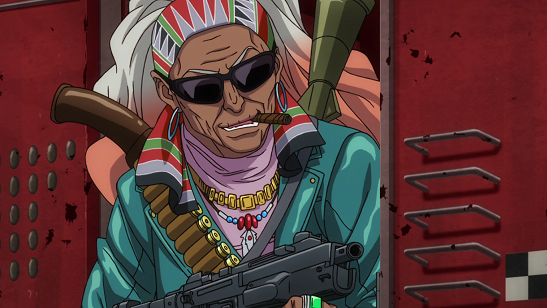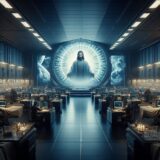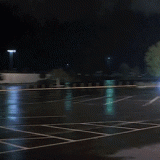Adam Gaffen for Amazing Stories: Welcome! It seems appropriate that there’s a science fiction author who is a rocket scientist; how did one lead to the other?
Stephanie Osborne: Thank you! And thank you for asking to interview me.
My interest in space started out partly because of science fiction and partly because of watching the space program. I discovered Star Trek and NASA about the same time, you see. The latter was “where we are now,” and the former was “where we are going,” insofar as I could see. And I wanted to be part of that. It also turned out that I was always a good writer with a good imagination. I was writing entire stories (even plays) in elementary school. I just never stopped writing, really.
AS: You have collaborated with other authors (Travis S. Taylor). Collaboration can be difficult; how have you managed splitting the writing?
SO: Some authors, it’s easy; others, not so much. Travis is a joy for me to work with because we think and write so much alike in so many ways. Usually though, the way it works with any collaboration I do is that one of us writes until s/he gets stuck and then passes it to the other, who writes until s/he gets stuck and passes it back. If we’re smart, we go over the work of our collaborator to tweak it so it all flows smoothly too. So each bit gets edited multiple times before the book is done.
Travis and I brainstorm together a lot too. I might get a call from him while he’s on travel and has just finished dinner, and he says, “Got about 10 minutes? I had an idea today and wanted to run it by you before I wrote it.”
“Sure. Whatcha got?”
“Well, I was thinkin’ that if our bad guy was this, then we could have this happen…”
“Ooh! Ooh! Yeah! Because then this and this and this would happen, and the good guy would think…”
Next thing we know, two hours later our cell phone batteries are dying and we’ve just plotted the next several chapters in detail, plus gone back and added a subplot!
I’ve also co-authored with Darrell Bain. He’s an ebook best-selling author, and has won the EPIC Award several times, and the Dream Realm award at least once that I know of. Our first book together was an ebook best-seller and an EPIC Award finalist. It was the first time I really collab’ed with anyone and it was a little more difficult because we didn’t think as much alike. We had a few disagreements. But it was still a good collab, because I always try to learn things from my co-authors, and since Mr. Bain is in his…eighties, I think…there was a lot of experience from which to learn, there. I have a lot of respect for him.
AS: Speaking of collaboration, you co-wrote A New American Space Plan. What is your vision of where we go from here?
SO: Not where we are, certainly. I’m horrified at the stagnation that Capitol Hill has dropped onto NASA. Most people don’t realize that NASA’s numerical budget has stayed essentially the same since its inception. It was approximately $15B/year in the 1960s. It was approximately $15B/year in the 1970s. It was approximately $15B/year in the 1980s. It was approximately $15B/year in the 1990s. It was approximately $15B/year in the 2000s. And it is approximately $15B/year today. Actually it is rather below that amount at the moment and was nearly cut in half for awhile but it has rebounded some.
What this means is that NASA’s budget has not been adjusted for inflation; we all know that a 1960s dollar was worth a lot more than today’s dollar. Yet NASA does more on what is, effectively, less, than ever before.
Much of NASA’s so-called “overruns” are due, not to poor planning on NASA’s part, but to the fact that every time a new administration comes in on Capitol Hill, they gotta stick their fingers in the pie and leave their own fingerprints in the dough. This means that about every 4 years, NASA’s direction gets jerked around, their budget gets slashed and rearranged. And four years is simply not enough time for a significant effort of the magnitude of manned space exploration. Take, for instance, the Constellation/Ares program. The prototype launch vehicle HAD BEEN SUCCESSFULLY LAUNCHED! It was a program that was ready to go, and only needed a quick testing of the manned capsule before moving forward. But shortly after the prototype test launch, the entire program was canceled because the current administration wanted the monies for other things. Now, some people say, “We should eliminate NASA and use all that wasted money elsewhere.” I’ve already pointed out where the waste comes from. And I’ve already pointed out that the budget has remained constant. Now let me point out that NASA’s budget currently is well less than ONE-HALF of ONE PERCENT of the Federal Budget. If you made a pie chart of the Federal Budget, NASA’s wedge would be the width of a human hair. Don’t get me started on how it compares to the deficit.
And we cannot simply let NASA die; traditionally human exploration has always been a government endeavor, because 1) they are usually the only entities that have sufficient funding; 2) much of basic exploration has very little to do with “the bottom line” for commercial ventures.
So in my mind, it’s going to take both, at the very least. BUT I think Travis and I both foresee that the government entities will be leading the way, with the commercial companies following the path thus blazed.
Other countries, particularly the People’s Republic of China, have a detailed space plan laid out that includes, “In this year we will complete a permanent space station. In this year we will place the first taikonaut on the Moon. The following year, we will send up a habitat that will remain, and commence construction of a base/colony. Within five years of that, the first taikonaut (first human?) will set foot on Mars…” We don’t have that. Not anymore. There are plans for going back, but ABSOLUTELY NO TIMETABLE for when the USA will get there.
So? What’s the big deal? The big deal is multifold. 1) The PRC’s space program is on the surface civilian but in reality it is a part of their military. This means it has a military budget and said budget is classified. They can pump as much money into it as they like and nobody will know. 2) They are already well on the way to constructing a launch vehicle capable of escape velocity. This means that they can shortly reach the Moon. The PRC did NOT sign the Moon Treaty, which states that the Moon is to be a jointly human endeavor, not to be used for military purposes. They have also not signed the Space Treaty, which does the same for the rest of space. Read into that what you will, and let me remind you that Sun Tzu, who noted in Arts of War that, “An army with higher ground Is at a distinct advantage,” was Chinese. And that space is the ultimate high ground.
In our joint opinion, this is all a very serious issue. Even if we find NOTHING of value out there (which we know won’t happen) the spinoff technologies of the space program have been incredible. And they have, by NASA’s creation mandate, been given away gratis to the manufacturing community.
AS: Your writing has a classic, hard SF edge to it. What other hard SF authors have influenced you?
SO: Besides Travis, of course, who is also my writing mentor and one of my best buds. Lessee, listing ’em would be hard. Madeline L’Engle wrote the first specfic book I ever read, A Wrinkle In Time. My Displaced Detective series contains a small homage to her and that book, in that the device that accesses alternate realities is called Project Tesseract. Then there’s Bradbury (who I had the chance to meet; he was delightful), and Asimov, and Blish, and Clarke, and Tolkien and Conan Doyle and Wells and Verne and on and on and on and ohmigosh, far too many to name in my childhood and adolescence.
More recently I’ve been influenced by Lois McMaster Bujold, who I met this past summer at DeepSouthCon 50 here in Huntsville [AL]. I adore her Vorkosigan Saga, and I like her writing style. It’s slightly different from what I’m used to, and I absorbed that and hopefully learned from it (and am still learning; to hear her read from her own works at DSC50 was very enlightening after having read her works). And this might sound odd, but in terms of style I get a huge kick out of James Joyce, simply because he had the chutzpah to defy all sorts of convention and make up, not only his own words, but his own form of grammar and punctuation.
AS: Growing up, who were your favorite authors?
SO: LOL I think I just answered that, more or less. I really first “teethed” in SF on television, with Star Trek and (gasp!) Lost in Space – which latter started out pretty decently before descending into camp and self-parody.
After A Wrinkle in Time came Lester Del Rey’s Runaway Robot. The cover on Amazon is still the one I remember. After that I pretty much went wild in the SF kid’s sections. I remember Bradbury’s Martian Chronicles from that time too. And I, Robot, one of Asimov’s books. My reading is actually kind of Swiss-cheese, because I grew up in the rural South and didn’t always have access to good SF. The bookstores in town maybe carried one bookcase of SF, the school library (there wasn’t an elementary library I was aware of until I was nearly to middle school, and then I worked in it) had little to nothing.
There was a lot of popular science in all of my reading too, because I really wanted to understand how this stuff worked. The fact that my dad programmed computers was a help, too. I could count in decimal, binary, octal, and hexidecimal before most kids even knew what a decimal point was.
AS: Your Muse seems to know no bounds; you cross genres regularly. Tell us a little about your Displaced Detective series.
SO: The Displaced Detective Series is a science fiction mystery series in which the brilliant hyperspatial physicist, Dr. Skye Chadwick, discovers that there are alternate realities, and said alternates are often populated by those we consider only literary characters. Her pet research, Project: Tesseract, hidden deep under Schriever AFB, is her means of looking in on these continua. In one particular reality, continuum 114, a certain Victorian detective (who, in fact, exists in several continua) was to have died along with his arch-nemesis at the Reichenbach Falls. Knee-jerking, Skye intervenes, rescuing her hero. Sherlock Holmes inadvertently flies through the tesseract wormhole connecting his universe with ours, while his enemy, Professor James Moriarty, plunges to his death. Unable to send Holmes back without causing devastating continuum collapse due to non-uniqueness, he must stay in our world and learn to adapt to the 21st century.
I’ve been a Holmes fan since childhood. In high school I submitted a Holmes pastiche to the school literary magazine; it was thrown out because the English Lit teacher was convinced it was a plagiarized Conan Doyle story (the submissions were blind-judged). After she found out at the end of the year that I’d written it, she apologized profusely, saying if she’d known I wrote it, she’d have known it wasn’t faked. I’ve never been quite sure if that was compliment to my writing skill, my personal morality, or both.
Anyway, some years back, well before the current spate of TV series and movies, a plot bunny bit me on the @$$. Hard. The resulting manuscript came in at rough draft 215,000 words (most novels are 100,000 words), in something like 2 months. After some negotiation with my publisher, it was split into two volumes to make it more manageable, and the Displaced Detective series was born. Those books are The Case of the Displaced Detective: The Arrival and The Case of the Displaced Detective: At Speed. Both were released at the end of 2011. Books 3 & 4 are now out; they are The Case of the Cosmological Killer: The Rendlesham Incident and The Case of the Cosmological Killer: Endings and Beginnings. (I promise the other planned books in the series are single volume!) I have 7 books planned:
A Case of Spontaneous Combustion (Book 5; halfway complete)
A Little Matter of Earthquakes (Book 6; in my head but beginning to be written)
The Adventure of Shining Mountain Lodge (Book 7; complete)
as well as ideas for a good 3-4 more past that.I love this series. I think I could write in it the rest of my career easily.
AS: Any other exciting news you’re able to share with us?
Hm. Well, I have a steampunk novel that I’m shopping around; by the time this is printed, I should know whether my short story, The Fetish, has progressed from EPIC Award Finalist to winner or not. I have several screenplays and film projects in work. Travis and I are trying to get our heads together for another fiction book or two (or three or four) and maybe another popular science book too.
So I’m staying pretty busy. It’s cool to have had two careers that you love.
AS: Thanks Stephanie!
An Interview with Stephanie Osborne
Please take a moment to support Amazing Stories with a one-time or recurring donation via Patreon. We rely on donations to keep the site going, and we need your financial support to continue quality coverage of the science fiction, fantasy, and horror genres as well as supply free stories weekly for your reading pleasure.
https://www.patreon.com/amazingstoriesmag










